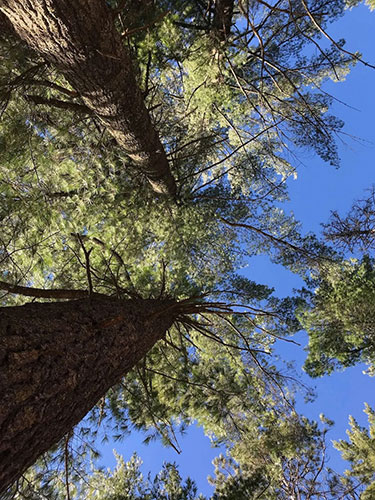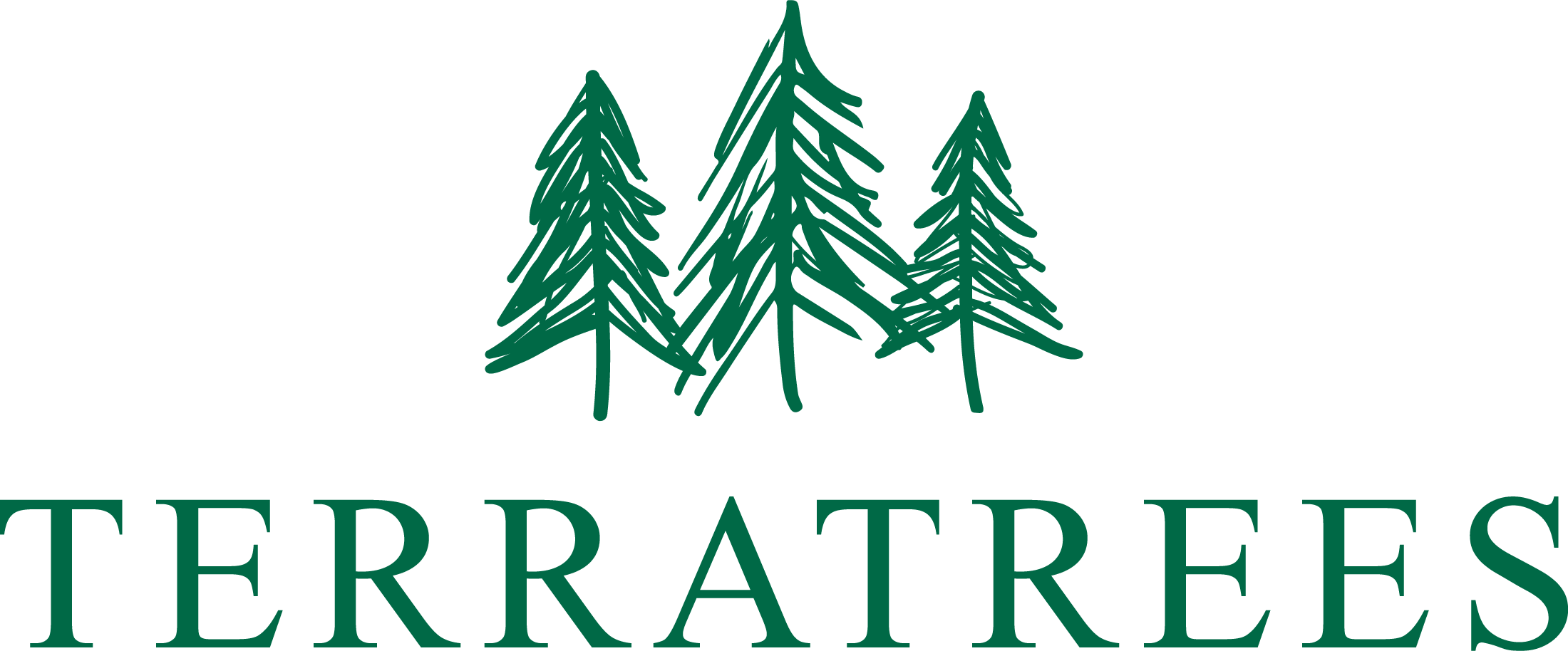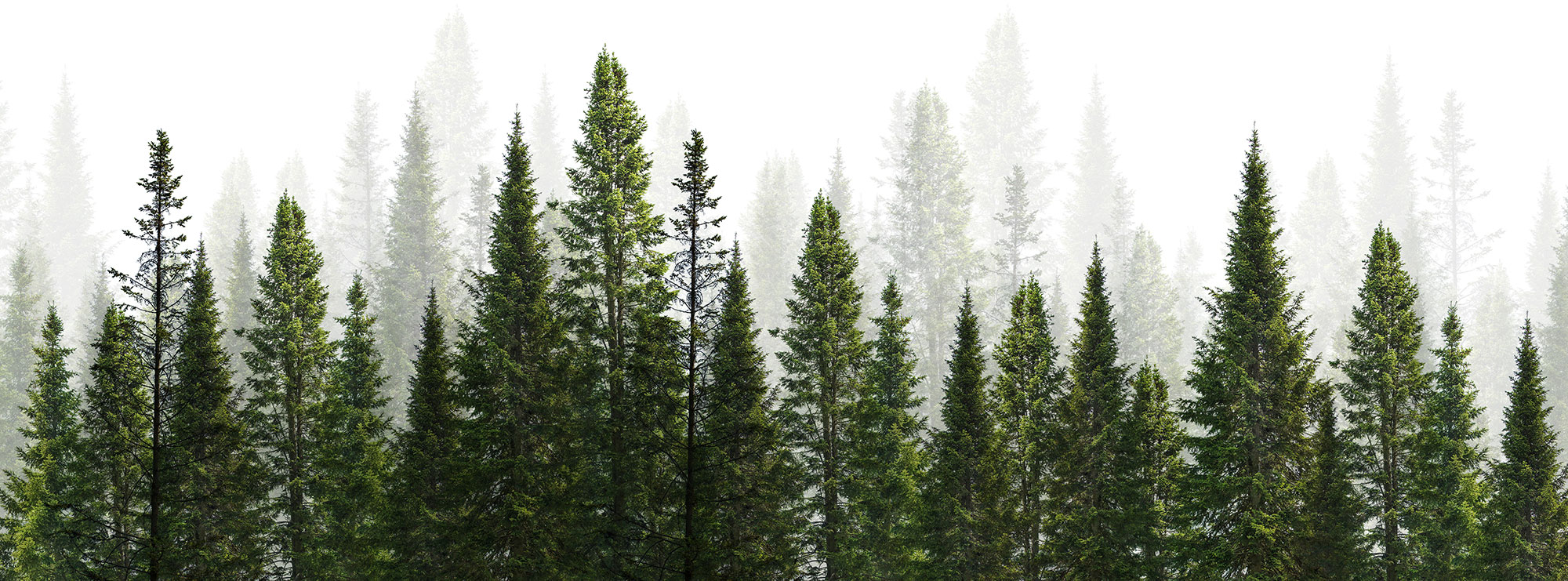Soon after beginning to research this topic, we quickly realized it could funnel us down the rabbit hole and shoot us out on the other side with enough information to fill encyclopedias.
There are so many interesting layers to the topic, but we decided to focus in on four areas:
- The origin of forest loss in America
- The current footprint of U.S. forests
- Primary drivers of modern-day deforestation
- What this means for reforesting efforts
A lot of what we initially share below is disheartening, but please stay with us. We must have the courage to face stark realities in order to orchestrate solutions and achieve the healing of our beautiful planet.
European colonization
A century ago, our main forest-related problem in the U.S. was deforestation due to European colonization. These early settlers transformed North America, draining marshes, tilling the soil, and chopping down millions and millions of acres of virgin forest to clear-cut the land for agriculture and settlement.
The U.S. Department of Agriculture’s Forest Service estimates that in the year 1630, the United States had approximately 1.05 billion acres of forested land.1 By the early 1900s, the settlement period was mostly over, and the damage was obvious. In 300 years, America lost at least a quarter of its original forest land.2 In response, the U.S. Forest Service set aside protected areas like national forests and grasslands and created governance for managing forests on both public and private lands.
These efforts led to decades of expansion that reclaimed some of the lost forest land. But according to recent data, the U.S. Forest Service says that American forests have now plateaued at 766 million acres—more than 234 million acres short of where this country started before colonialism. 3
A leveling off in the pace of deforestation sounds promising, but we have to keep pushing for forest expansion because these ecosystems help mitigate climate change.
And the threats to these precious ecosystems aren’t slowing down.
According to Global Forest Watch, in the twenty years from 2001 to 2021, America lost more than 109 million acres of tree cover, equivalent to a 16% decrease in tree cover since 2000, and 17.4 gigatons of CO₂ e-emissions.4 Expanding out to a global view, based on more than 400,000 ground-sourced measurements of tree density, scientists estimate that more than 15 billion trees are cut down each year, and the global number of trees has fallen by approximately 46% since the start of human civilization.5
Sources of tree loss
Government-protected areas and forest-friendly policies definitely work, but we need more private landowners to join the conservation huddle because American deforestation continues due to urbanization/land development and commodity-driven agribusiness—areas of forest that are burned or cleared to make space for crops and/or livestock.
Other tree loss drivers include wildfires, drought, invasive species, and outbreaks of insects and disease—all made worse by climate change.
Recipe for Disaster: over-fueled forests + drought
Decades of fire suppression has resulted in increased forest densification, exotic species invasions, and structural changes which reduce ecosystem resilience to fire.6 Clearly, none of these are positive changes.

Even old-growth trees like these majestic white pines can be susceptible to fire when the forest is over-fueled and inappropriately managed.
All through history, small forest fires were nature’s way of helping to prevent the cataclysmic conflagrations that now happen with increasing frequency. Smaller, more frequent fires consume the dead wood and underbrush that otherwise build up to dangerous levels, resulting in more catastrophic fires when they occur.
Fire suppression encourages tightly-packed groups of small trees. Historically, forests were generally low in density yet highly variable in their structure, with open patches and clumps of trees. The older and bigger trees get, the more adaptations they have, like thicker bark, a high canopy, and higher levels of resilience to disturbances. We have normalized high density, homogeneous stand structure and high competition forests that would not have occurred in forests of the past.
Forests need robust management plans that include silviculture practices to thin out the densely packed areas and remove brush that acts like high-octane kindling. This will allow the standing trees to become the “old growth” in the future. As it is, many old growth forests are being lost in infernos so hot the forests won’t recover for centuries because the earth has been sterilized.
Adding insult to injury: disease and invasive species
Forest densification also tends to predispose trees to insect and disease mortality, further loading up the dead fuel mass. Fire seasons are getting longer, and wildfires are spreading faster and burning hotter than ever. Since 2000, we’ve had record fires in many states, resulting in more than 1.2 million acres (and countless animals and beneficial insects)…just gone.
Nationwide, the U.S. Forest Service estimates that almost a third of our forested lands are at high to moderate risk of fires that could threaten human safety and ecosystem integrity.7
After fires come invasive plants, and unfortunately, eradication can be nearly impossible. Invasive species of all kinds are a huge threat to our forest’s biological diversity and health, impacting regeneration, soil chemistry, and habitat availability.8
Hope + Action
Forests provide a home to millions of plants and animals around the world. They also play a vital role in the world’s carbon cycle by balancing greenhouse gas emissions, making the air in our atmosphere breathable, and protecting against climate change. Looking at the statistics can be so discouraging, but there are concrete things we can all do to expand our precious forest ecosystems.
- Plant trees (we can help!)
- Buy wood products that have the FSC (Forest Stewardship Council) label
- Watch your paper usage & go digital whenever possible
- Reduce consumption of single-use products
- Buy recycled products and reuse, reuse, reuse when you can
- Use your dollars to support the products of forest-friendly companies
- Share this simple list with your friends, family, and community.
Our everyday actions can impact forests in America and around the world.
TerraTrees’ goal is ambitious. We not only want to plant millions of trees…we want expand America’s forest footprint by reclaiming degraded land that used to be a forest and restoring it to the way nature intended.
With your help and many others like you, we can do it. 🌱
References:
[1] Smith, W. Brad; Vissage, John S.; Darr, David R.; Sheffield, Raymond M. 2001. Forest Resources of the United States, 1997. General Technical Report NC-219. St. Paul, MN: U.S. Dept. of Agriculture, Forest Service, North Central Research Station
[2] https://www.fs.usda.gov/speeches/forest-management-experience-united-states Forest Management Experience in the United States, October 17, 2006
[3] Oswalt, Sonja N.; Smith, W. Brad; Miles, Patrick D.; Pugh, Scott A., coords. 2019. Forest Resources of the United States, 2017: a technical document supporting the Forest Service 2020 RPA Assessment Gen. Tech. Rep. WO-97. Washington, DC: U.S. Department of Agriculture, Forest Service, Washington Office. 223 p.
[4] Global Forest Watch. World Resources Institute. Accessed on 3/19/23. www.globalforestwatch.org
[5] Crowther, T., Glick, H., Covey, K. et al. Mapping tree density at a global scale. Nature525, 201–205 (2015). https://doi.org/10.1038/nature14967
[6] Andrews, Patricia L.; Butler, Bret W., comps. 2006. Fuels Management—How to Measure Success: Conference Proceedings. 28-30 March 2006; Portland, OR. Proceedings RMRS-P-41. Fort Collins, CO: U.S. Department of Agriculture, Forest Service, Rocky Mountain Research Station. 809 p.
[7] https://www.fs.usda.gov/speeches/forest-management-experience-united-states Forest Management Experience in the United States, October 17, 2006.
[8] Oswalt, Sonja N.; Smith, W. Brad; Miles, Patrick D.; Pugh, Scott A., coords. 2019. Forest Resources of the United States, 2017: a technical document supporting the Forest Service 2020 RPA Assessment. Gen. Tech. Rep. WO-97. Washington, DC: U.S. Department of Agriculture, Forest Service, Washington Office. 223 p.

